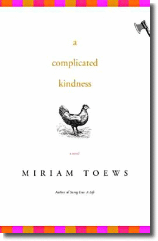Peart recently talked to the Christian Science Monitor about what he was listening to and viewing for entertainment. And reading:

Click here to read the rest of the interview about music and movies.On my night table right now is a book called Timothy; or, Notes of an Abject Reptile by Verlyn Klinkenborg. He's a columnist for The New York Times. I wrote him a fan letter a few years ago. (I used to try to write letters to a journalist, an author, a weatherman, just to tell them I like their work!) I've been following his career for a long time and this book is from the point of view of a tortoise in the garden of an [actual] 18th-century naturalist. Gilbert White was the name of the naturalist, and he wrote about a tortoise named Timothy who lived in his garden. So, 300 years later, Klinkenborg has turned that around the other way.
The other book that I haven't reviewed yet on my website, www.neilpeart.com, is A Complicated Kindness by Miriam Toews. She's a Canadian writer, and it's one of those novels that you just crawl inside and live in until you finish it. It's a novel about a young girl growing up in an old-order Mennonite community in Manitoba, near the US border. It's done with such humor, and a charming quirkiness, while being quite a harsh story at the same time. I really admired it.
Graham Greene's Brighton Rock amazed me. I had read a number of his [books] over the years and I'd heard of "Brighton Rock," but had just never read it. As I remark in my review, it's set in the 1930s but it could so easily be [about the] Teddy Boys of the '50s, or the mods and rockers of the '60s, or the punks of the '70s, as it's all the same archetypes and the same kind of gritty British urban atmosphere. The dark, anti-hero punk, Pinkie, and his girlfriend, have vestiges of Catholicism that make them believe in good and evil. Their nemesis in the book, Ida, is a boozy bar girl and she believes in right and wrong. They have this spiritual idea that, whatever they do, they'll be forgiven. Whereas she's totally unforgiving. She says, "what you've done is wrong and you must pay for it." It's a very interesting division of morality and ethics.
I've always loved the quote, "you can never read the same book twice." John Steinbeck's The Winter of Our Discontent was an example
of one that I'd read probably 25 years ago and loved it at the time. It deals with the morality of right and wrong and how honest we should be in life - despite the expectations that you should be dishonest, and that you should be corrupt, and that you should take a little under the table, and that you should cheat when you can. It's still so topical today: How much dishonesty can we accept from our leaders, from the media, and from ourselves, even?
Around 1980 or so, I had a second-hand opinion that I wasn't going to like Ernest Hemingway because his characters were all too butch, or something. How foolish we are when we sometimes adopt other people's opinions as our own. My point of access with Hemingway was not only the characters, but certainly his feeling with nature. I then became totally fascinated with his own writing, the writing of others about him, his biographies, and even a book of his letters. And the times he lived through, too, as a writer in the 1920s, 1930s, right up until the 1950s in his career - through the Spanish Civil War and World War II as a wartime reporter. That fascinates me, that whole period of history.
For a more indepth take on some of the books mentioned above--and some other titles--see Peart's books page at his website.
--Marshal Zeringue






